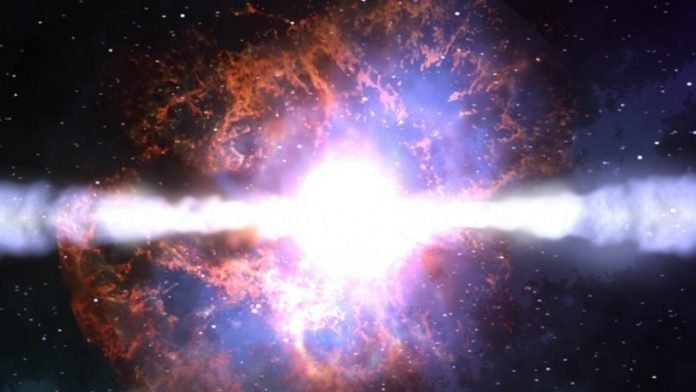
In a world-first, astronomers from The Australian National University (ANU) have discovered evidence of a massive explosion that led to the destruction of a rapidly spinning, strongly-magnetized star.
The so-called “magneto-rotational hypernova” occurred around a billion years after the Big Bang and was 10-times more energetic than a supernova.
The breakthrough discovery, led by an international team of scientists, offers clues for why an unusually high concentration of metal elements were present in another ancient Milky Way star.
The star, SMSS J200322.54-114203.3, had higher amounts of zinc, uranium and europium, compared to the first stars in the universe which were predominantly made up of hydrogen and helium.
“We calculate that 13-billion-years ago, J200322.54-114203.3 formed out of a chemical soup that contained the remains of this type of hypernova,” Dr David Yong, from the ANU Research School of Astronomy and Astrophysics, said.
“No one’s ever found this phenomenon before.
“It is a very rare star, and the fact that it contains much larger than expected amounts of some heavier elements means that it is even rarer – a real needle in a haystack.”
Nobel Laureate and ANU Vice-Chancellor Professor Brian Schmidt is a co-author of the study.
“The high zinc abundance is a definite marker of a hypernova, a very energetic supernova,” he said.
A key feature of the star was its rapid rotation. While hypernovae have been observed since the 1990s, this is the first time one combining rapid rotation and strong magnetism has been detected.
Until now, researchers were unable to explain why this star contained unusually high traces of metals.
“We now find the observational evidence for the first time directly indicating that there was a different kind of hypernova producing all stable elements in the periodic table at once – a core-collapse explosion of a fast-spinning strongly-magnetized massive star,” Associate Professor Chiaki Kobayashi, from the University of Hertfordshire in the UK, said.
“It is the only thing that explains the results.”
The research also involved members from the ARC Centre of Excellence in All Sky Astrophysics in 3 Dimensions (ASTRO 3D).
“This is an extremely important discovery that reveals a new pathway for the formation of heavy elements in the infant universe,” ASTRO 3D Director and ANU Professor Lisa Kewley said.
The research has been published today in the journal, Nature.



